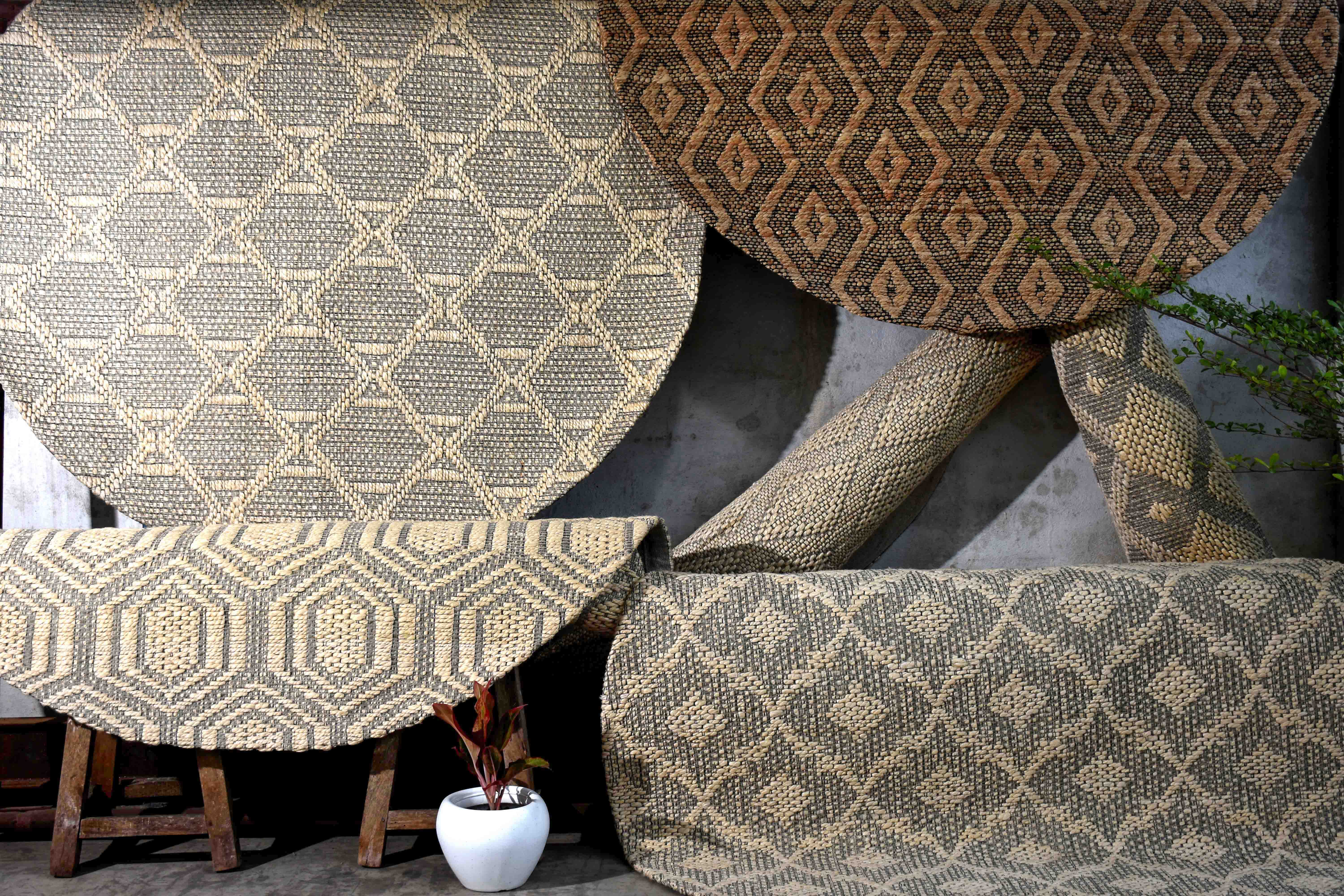
We construct our carpets and rugs through various techniques and materials. For us, carpets and rugs are pieces of art and we make sure that we are following the best methods to produce the same for you and your customers. Each collection has it’s origin story behind it and we try to incorporate the traditional and modern techniques together to create high-quality products.
Hand-tufted rugs are made by punching strands of wool into a canvas stretched on a frame with a manually operated tool. When the rug features a pattern, the design is created on wax paper to set a trace. Expert artisans tuft over the pattern, paying close attention to where the patterns are to be placed, and then paints the underside of th e rug with latex glue and covers it with a backing canvas. On completion, the rug’s loops may be left visible, shaved down, or delicately carved to create a definition in the pattern.
woven textured rugs are a delightful addition to any interior. The weaving process is central to the quality of the rug. The number of knots per square inch is pertinent in determining the textural landscape of the rug. Flatweaves are contemporary in nature. These rugs are light in weight and easy to carry & fold. Handloom Rugs consist of the Panja loom weave and the Pit loom weave.
Intricate patterns and dense quality are achievable by Panja Looms. A heavy instrument like a comb is used for beating in the wefts, along with a pair of scissors for trimming off the ends of the yarn after each row of knots is finished. The pile is often shorn with special knives to obtain an even surface for a finished look.
The Pit Loom is a pit where the artisan uses pedals to produce flatweave rugs, also called ‘dhurrie’ rugs. It is called pit loom because of the design of the pit below the loom, which is used for the shedding operation. The warps are maintained with an adequate tensile strength between two beams where wefts are inserted manually.
A hand-knotted rug, also referred to as oriental rugs, is a rug that is made by hand on a specialized vertical frame loom. The process of hand knotting rugs goes back a few thousand years. Produced using ancient techniques, knotted rugs are famous for their boundless design and color variations. Depending on the type of knots, the size of the wool strands, and strength of the knots, the density and quality of a rug is determined. Individual knotted rugs can take months to make due to the precision and level of skill required.
The term “jacquard” indicates how the pattern is woven, not the specific pattern itself. Although these intricate fabrics seem commonplace today, that was not always the case. Simply put, jacquard is a specially woven fabric created using a Jacquard loom, and various materials such as cotton, polyester, silk, and acrylic can be woven to create them. Some of these fabrics even feature a raised pattern, such as a Matelassé or a brocade.
Polypropylene and PET are two of the most popular outdoor rug material. They are stain-resistant, easy to clean, and won’t fade from sunlight. These rugs can also handle high moisture and heavy foot traffic. They are strong and durable, but not at the price of comfort. Best for outdoor use such as picnic, beach or garden but is also suitable for indoors.
Outdoor rugs are made out of recycled materials with full compliance to social and environmental audit requirements.
A bath rug helps absorb water from your body when you are stepping out of the shower or bath—it keeps excess water off the floor and prevents slipping on wet tiles. A bath rug serves multiple purposes. From a design standpoint, a bath rug can make a significant difference in the look of your bathroom. It can complement the overall color scheme of the bathroom or coordinate with the bath towels.

Our Rug Guide below is a one-stop solution to all your rug woes. From buying the right rug, to maintaining one after the purchase, we have got you covered for it all. When setting out to buy a rug, you might have inhibitions around factors that tantamount to choosing the perfect rug for your abode. So, let’s acquaint you with all the prerequisite information to help you make a sound decision –
Room Décor – With respect to your personal taste in home décor, you can choose to go for either a modern or vintage rug. For instance, a subdued neutral colored rug would create more texture in a room while keeping it all pretty lowkey. The current trends of consumerism focus on environment friendly, minimalistic, organic materials.
Design & Texture – There is a varied range of designs and textures available in the rug market these days. If you are looking for a natural look in your space, then you can go for rugs with floral patterns or if you want to add a spark to your space then you can look out for one with added sheen.
Comfort Level – The primary reason for buying a rug is comfort. Make sure you invest in a rug that provides ultimate snugness under your feet. This varies on the basis of the material used to create a particular rug. Materials like viscose and silk are extremely soft and comfortable.
Once you have laid your hands on the perfect rug for your home, it is time to know how to take the right care of it to enjoy its warmth for a good time. Considering the kind of rug you have zeroed in on, following care instructions can be adopted –